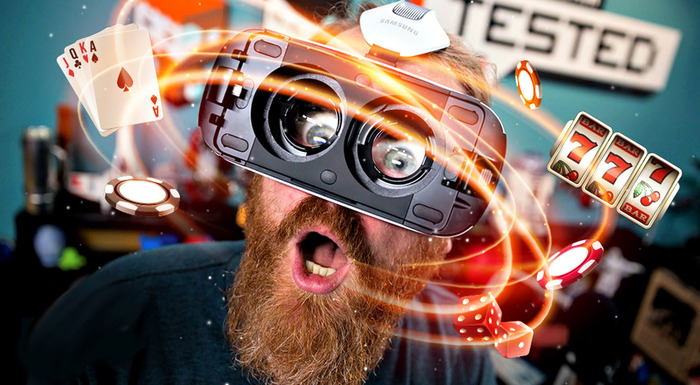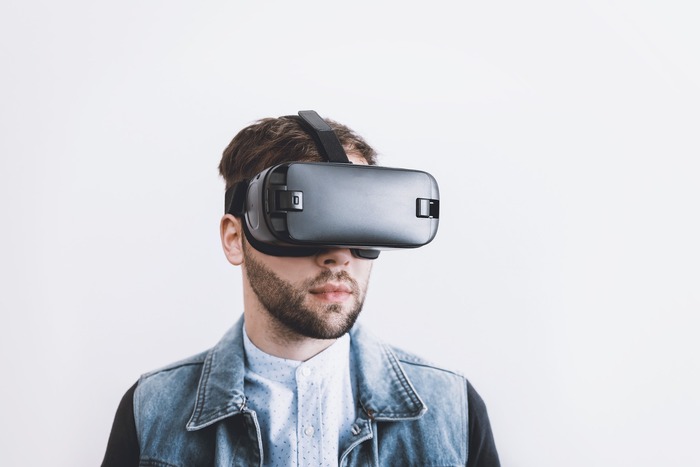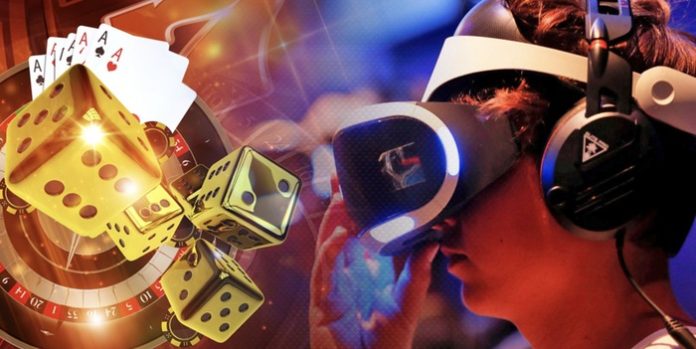In recent years, a groundbreaking technology has started to make its mark in the online gambling world: Virtual Reality (VR). VR technology offers an immersive experience, taking the digital gaming experience to new heights. It’s not just about playing a game; it’s about stepping into a whole new world, a virtual casino that replicates the sights, sounds, and interactions of a real-life gambling floor. With VR headsets and compatible accessories, players can now walk through virtual casinos, interact with other players and dealers, and play games with a realism that was previously unimaginable in the online domain.
The Advent of VR in Online Gambling
The gambling industry has witnessed a dramatic evolution over the past few decades. Traditional casinos, with their glamorous ambience and bustling energy, have long been the cornerstone of the gambling world. However, the late 20th century marked a significant shift with the advent of online gambling platforms.
This transition was driven by the internet revolution, enabling players to access a myriad of casino games from the comfort of their homes. Online gambling platforms rapidly grew in popularity, offering ease of access, privacy, and a diverse range of games. This digital shift not only democratized gambling but also laid the foundation for future technological integrations.

The introduction of Virtual Reality (VR) technology in the gaming industry marked a pivotal moment. VR, known for its ability to create immersive, three-dimensional virtual environments, opened new possibilities for enhancing the online gambling experience. By donning a VR headset, players could now experience a level of immersion that was previously the exclusive domain of physical casinos. This technology promised to bridge the gap between the convenience of online play and the rich, engaging experience of a real-world casino.
The early examples of VR casinos were both a technological marvel and a bold venture into uncharted territory. Companies like SlotsMillion launched the first fully functional VR casino in 2015, offering a glimpse into the potential of VR in the gambling sector. These early VR casinos allowed players to walk around simulated casino floors, learn how to win at slots and engage in various table games.
The reception was a mix of awe and curiosity, with players enthralled by the realistic casino experience and industry experts predicting a new era in online gambling. Despite initial challenges such as high equipment costs and limited VR content, these pioneering efforts were crucial in demonstrating VR’s potential in transforming online gambling experiences.
Technical Aspects of VR Casinos
At the core of Virtual Reality casinos lies a sophisticated blend of hardware and software. The hardware component primarily consists of VR headsets like Oculus Rift, HTC Vive, or Sony PlayStation VR. These devices are equipped with sensors to track head movements, allowing the virtual environment to respond in real-time. Additionally, hand controllers and sometimes even full-body suits are used to capture the player’s actions, enabling interaction with the virtual casino environment.
The software aspect involves the creation of immersive 3D environments. This is achieved through advanced game development platforms like Unity or Unreal Engine. These platforms allow for the design of highly detailed casino spaces, complete with realistic slot machines, gaming tables, and even NPC (non-player character) casino patrons and dealers. The software also includes user interface design, ensuring that navigation and interaction within the VR casino are intuitive and seamless.
User Experience: Immersion, Interaction, Realism
The user experience in VR casinos is profoundly different from traditional online gambling. Immersion is the key element – players feel like they are physically inside a casino. This is achieved through 360-degree visuals and spatial audio, which replicates the sounds of a real casino. Interaction is another crucial aspect. Players can use hand controllers to place bets, spin roulette wheels, or interact with objects and other players within the game. This level of interaction adds a social dimension that is often missing in standard online casinos.
Realism in VR casinos is not just about visual fidelity but also about replicating the atmosphere and dynamics of a real casino. This includes the ability to move around freely, observe games and players, and even engage in conversations with other players or virtual dealers, adding a layer of social interaction that enhances the gaming experience.
Technical Challenges and Current Limitations
Despite the advancements, VR casinos face several technical challenges. One significant issue is the requirement for high-end hardware. VR headsets and compatible PCs or gaming consoles can be expensive, limiting accessibility for a broader audience. Additionally, the concern of motion sickness in VR is not entirely solved, which can deter some users from prolonged gaming sessions.
From a software perspective, creating detailed and engaging virtual environments is resource-intensive. There’s also the challenge of ensuring these environments are stable and scalable to handle multiple users simultaneously.

The Future of VR in Online Gambling
The landscape of Virtual Reality in online gambling is poised for remarkable growth, driven by continuous technological advancements. One emerging trend is the integration of Artificial Intelligence (AI) with VR, enhancing personalized gaming experiences. AI algorithms can tailor the virtual environment to individual preferences, creating a more engaging and user-centric experience.
Another advancement is in haptic feedback technology, which adds a tactile dimension to VR, allowing players to feel sensations like the shuffle of cards or the spin of a slot machine. Moreover, advancements in wireless and standalone VR headsets are making VR more accessible, eliminating the need for expensive and cumbersome equipment.
Cloud-based VR is another frontier, reducing the need for high-end local hardware and making VR casinos more accessible to a broader audience. Additionally, the integration of augmented reality (AR) elements in VR casinos could lead to a more blended and versatile gaming experience, combining the best of both worlds.
Predictions for the VR Gambling Landscape
The future of VR in online gambling is not just an extension of current trends but a potential paradigm shift. One prediction is that VR casinos will become more prevalent, offering experiences that are as rich and varied as those in real-world casinos. This could significantly broaden the appeal of online gambling to those who prioritize the experiential and social aspects of casino gaming.
Furthermore, live dealer games in VR could become more mainstream, combining the authenticity of live casino gaming with the immersive environment of VR. This could redefine online gambling, offering a hybrid experience that blurs the lines between online and physical gambling.
Challenges and Opportunities
With these advancements come significant challenges. The primary concern remains the digital divide – ensuring that advancements in VR gambling are accessible to a wider audience, not just those with the means to afford high-end technology. Regulatory challenges will also be significant, as the immersive nature of VR gambling raises new questions about responsible gaming and player protection.
On the opportunity front, VR casinos have the potential to revolutionize not just gambling but also online social interactions. They could become hubs for a range of entertainment and social activities, expanding their appeal beyond traditional gambling audiences.




